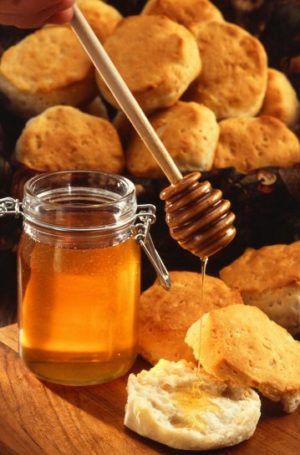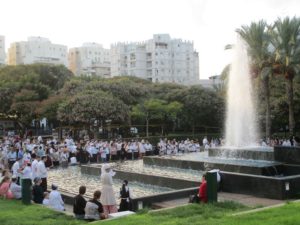SUNSET SUNDAY, SEPTEMBER 29: Rich dishes made with honey, paired with blasts from the shofar, mean it’s Rosh Hashanah, the Jewish New Year—and it’s also the start of the High Holidays. Do you know someone who is Jewish? Wish him or her L’shanah tovah—“For a good year!”
On the first and second days of the Jewish month of Tishri, Rosh Hashanah is celebrated by Jews around the world. In Hebrew, Rosh Hashanah means “head of the year,” or “first of the year,” and many Jews use this period of time to make resolutions and commitments for self-improvement. Sins are “cast” into a river and honey is consumed for hopes of a sweet New Year.
NEWS: Jews of all ages have been making and finishing shofars prior to this year’s Rosh Hashanah, the Chicago Tribune reported. Read the article here.
On Rosh Hashanah, work is not permitted and many more traditional adherents spend the day in the synagogue. The shofar, a ram’s horn blown like a trumpet, is one of the holiday’s most famous symbols—but Rosh Hoshanah also comes with special readings and prayers for a good new year.
Traditionally, Jewish teaching associates Rosh Hashanah with the anniversary of the creation of Adam and Eve, and the day’s services focus on the relationship between G_d and humanity. (Learn more from Judaism 101.)
HONEY, APPLES AND BREAD: A SWEET NEW YEAR
Of the sweet foods consumed on Rosh Hashanah, none is more popular than honey. Jerusalem, biblically referred to as “the land of milk and honey,” is yet another reason to eat honey on this special holiday. Most Jews eat apples or bread dipped in honey, or create dishes that incorporates these ingredients.
Prayers near a body of water accompany the practice of tashlich, which is the “casting off” of sins. The faithful travel to flowing water and empty their pockets into the river, symbolically casting off their sins. Typically, small bits of bread are placed in the pockets before tashlich, and later “cast off” during the ritual.
What are the High Holidays? Sometimes referred to as “High Holidays,” or “High Holy Days,” this is the period of Hashanah and Yom Kippur and usually the phrase includes the 10 days in between. One description of this period says, in essence, that G_d opens the books of judgment as the new year begins and finally, on Yom Kippur, the judgment for the year is “sealed.”
EXTRAS: BRISKET AND HONEY
Fifteen traditions: Reader’s Digest reported 15 must-observe traditions for Rosh Hashanah this year.
Want to make a perfect brisket? It’s a holiday favorite in many Jewish homes, and FeedTheSpirit columnist Bobbie Lewis (with guest writer Debbi Eber) tackles the tips and techniques for a perfect brisket dinner.
Sweet recipes: Looking to bake up something sweet and scrumptious this Rosh Hashanah? Try the Jewish Chronicle’s honey cake trifle; Huffington Post’s 21 recipes with honey and apples; or forward.com’s granola baked apples. For an entire menu of Rosh Hashanah recipes, check out AllRecipes, Epicurious, Food Network and Martha Stewart.

